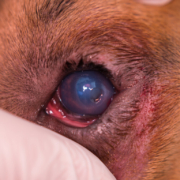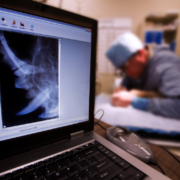Polypropylene Mesh vs. BioSIS: How Vetrix BioSIS Is Superior
We know you want to give your patients the best care there is. From diet and nutrition to coat care to wound care, you want to feel confident that you’re up to speed on the latest technology and products. This can be difficult when there’s so much information out there. When it comes to wound care, you can trust Vetrix to deliver the most accurate information and help you take the best care of your patients. Keep reading to learn how Vetrix BioSIS is superior to polypropylene mesh.
The Inflammatory Response
In a study done on rats, researchers compared Marlex (MX), a polypropylene mesh, to small intestine submucosa (BioSIS), a non-cross-linked collagen matrix, to repair the abdominal wall. When implanted, MX caused an immediate and intense inflammatory response in the rats. However, early-stage tensile strength was increased. The inflammatory response may be attributed to poor tissue compatibility, but it’s important to note that such a strong inflammatory response can lead to increased adhesion formation, bladder dysfunction, bowel obstruction, as well as other maladies.
The inflammatory response with BioSIS was present, however, the response was less than that of the MX.
Adhesion Density
BioSIS implants showed thicker density than MX implants within the first 14 days of extraction, however, this subsided after the 14-day mark passed. This density was attributed to fluid accumulation. While MX increased less in thickness during the initial 14 days, this perBioSISted throughout the rest of the 90 days. At the 30 day mark, the adhesion grade was greater in the MX treated extractions.
The extent of adhesion formation was the same in both groups up until 90 days when BioSIS-implanted rats showed more adhesions. So while BioSIS implants produced more adhesions after 90 days, they were less dense than the MX implant adhesions.
Collagen Production
As mentioned earlier, BioSIS produced a lower inflammatory response than MX. This was indicative of the type of collagen forming. The collagen production in the BioSIS explants was slower than that of MX. However, at the end of four weeks, 90% of the BioSIS implants had degraded and were replaced by macrophages and stronger scar tissue. This shows that the novel collagen produced was superior to that of the MX implant.
The issue of the BioSIS being weaker than MX can be overcome by increasing the number of layers in the BioSIS implant. And although the tensile strength was weaker at one month, by the end of the 90 days, the strength of the materials was comparable.
Why BioSIS Is Superior to Polypropylene Mesh
In summary, BioSIS implants produced less dense adhesions, a significantly lower inflammatory response, and a more architecturally stable collagen matrix for the formation of stronger scar tissue.
Have questions about Vetrix BioSIS? We’d love to hear from you and give you more information. Contact us today! And if you’d like to read more about interesting topics like this, check out our blog page.







